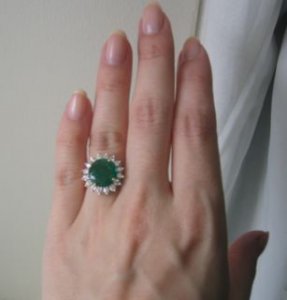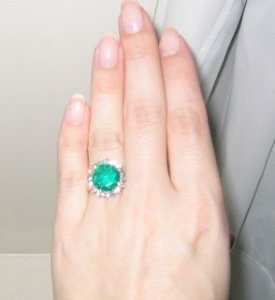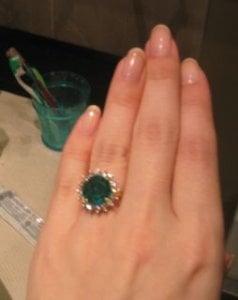- Joined
- Jun 13, 2005
- Messages
- 1,046
Hi,
I have just received my first piece of emerald jewelry (the appraisal is tomorrow).
In the mean time, a question... The emerald has some inclusions, which I am fine with. However, the color looks... fake. Like, a very pleasing green and really uniform. Note that the stone was sold to me as natural (not synthetic).
I know of the concept of gemstone coating to enhance color. Have we heard of this being done on emeralds?
Or what else could make the stone look so "good"?
Thanks for any info,
Anne
I have just received my first piece of emerald jewelry (the appraisal is tomorrow).
In the mean time, a question... The emerald has some inclusions, which I am fine with. However, the color looks... fake. Like, a very pleasing green and really uniform. Note that the stone was sold to me as natural (not synthetic).
I know of the concept of gemstone coating to enhance color. Have we heard of this being done on emeralds?
Or what else could make the stone look so "good"?
Thanks for any info,
Anne







300x240.png)